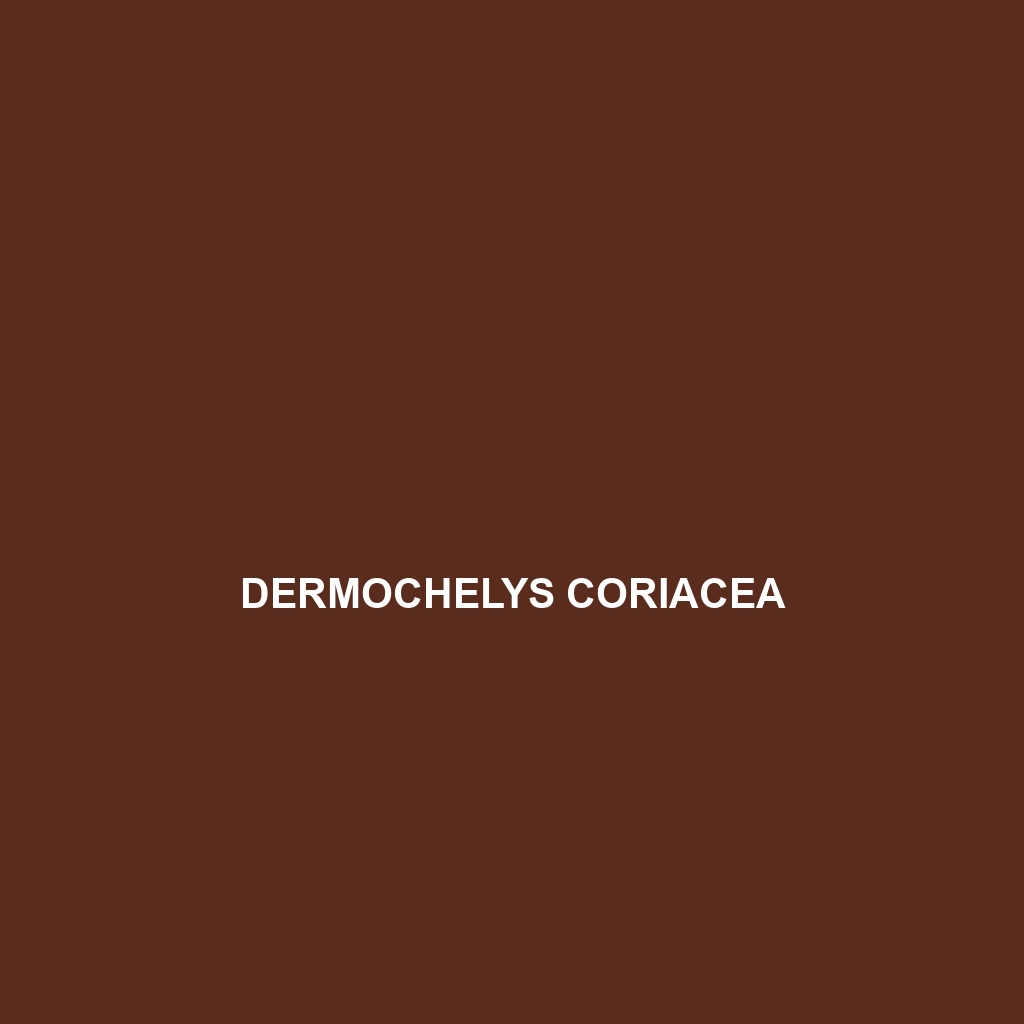Common Name:
Dermochelys coriacea
Scientific Name:
Dermochelys coriacea
Habitat:
Dermochelys coriacea, commonly known as the leatherback sea turtle, is primarily found in temperate and tropical oceans around the world. These turtles are often seen in the Atlantic, Pacific, and Indian Oceans. They prefer warm waters but can venture into cooler regions, making their habitat range quite expansive, including coastal areas, open oceans, and even some freshwater environments during nesting.
Physical Characteristics:
The leatherback sea turtle is the largest species of sea turtle, often reaching lengths of up to 2.9 meters (9.5 feet) and weighing between 250 to 700 kilograms (550 to 1,540 pounds). Unlike other sea turtles, Dermochelys coriacea is unique due to its leathery skin instead of a hard shell, with a dark gray or black coloration often speckled with white or yellow spots. It also features an oval body shape with a streamlined form that aids its swimming capabilities, long front flippers, and a distinctive ridged back.
Behavior:
Dermochelys coriacea is known for its migratory behavior, often traveling thousands of kilometers between feeding and nesting grounds. They are generally solitary creatures, but can sometimes be found in small groups during feeding. Leatherbacks are also deep divers, capable of diving to depths of over 1,000 meters (3,280 feet) in search of food, particularly jellyfish.
Diet:
As jellyfish enthusiasts, leatherback sea turtles primarily feed on gelatinous prey, including various species of jellyfish, salps, and sea slugs. Their voracious appetite for jellyfish helps control the population of these organisms in the ocean, highlighting their role in marine ecosystems. They may occasionally consume algae or other soft-bodied marine invertebrates, but jellyfish remains their staple food source.
Reproduction:
Dermochelys coriacea typically breeds every 2 to 3 years, with females nesting every 3 to 5 years in tropical and subtropical regions. The nesting season varies by geographic location, commonly occurring from late spring to early fall. A single female can lay between 80 to 100 eggs per clutch, burying them in sand. After an incubation period of about 60 days, hatchlings emerge and make their way to the ocean, where they face numerous challenges in their early life stages.
Conservation Status:
Dermochelys coriacea is currently classified as vulnerable by the International Union for Conservation of Nature (IUCN), with populations declining due to habitat loss, hunting, and entanglement in fishing gear. Conservation efforts are crucial to ensure the survival of this majestic species in our oceans.
Interesting Facts:
One fascinating aspect of the leatherback sea turtle is its ability to maintain a body temperature significantly higher than that of the surrounding water, allowing it to thrive in cold environments. Moreover, unlike other turtles, leatherbacks can dive deeper and for longer periods, making them one of the most resilient marine animals.
Role in Ecosystem:
Dermochelys coriacea plays a crucial role in marine ecosystems by maintaining the balance of jellyfish populations, thus contributing to the overall health of oceanic food webs. By foraging on jellyfish, they prevent overpopulation of these species, which can otherwise lead to detrimental effects on coastal fisheries and other marine life.
